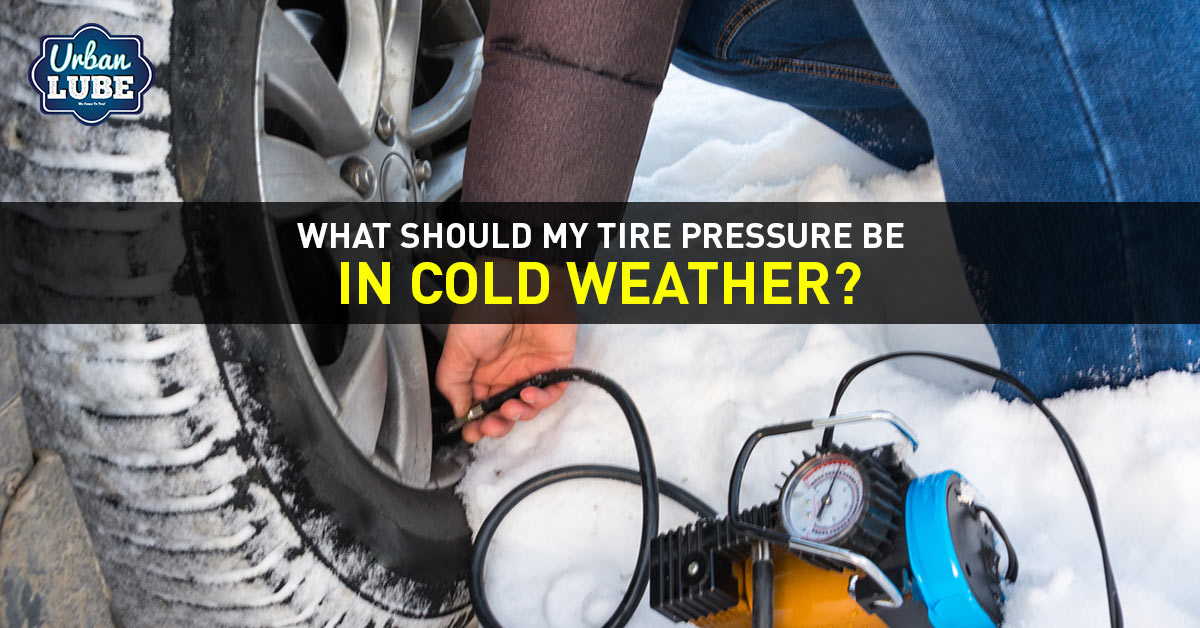
Tire pressure is a crucial factor that affects vehicle safety, fuel efficiency, and overall performance. Maintaining the right tire pressure is even more critical during the cold winter months when the temperature drop can lead to underinflated tires. In this blog, we will discuss tire pressure in winter.
What Should Tire Pressure Be in Winter?
The optimal tire pressure for most of the vehicles in Canada is between 30 and 35 PSI (pounds of force per square inch). However, check the vehicle manual to find out the exact tire pressure for your vehicle.
Does Tire Pressure Decrease in Winter?
During the winter months, the temperature drops significantly, causing the air inside the tire to contract, resulting in lower tire pressure. For every ten-degree Fahrenheit drop in temperature, the tire pressure decreases by one pound per square inch (PSI). Therefore, if your tire pressure is 30 PSI at 70°F, it will drop to 25 PSI at 30°F.
What’s Different About Tire Pressure in Winter?
The cold winter weather can have a significant impact on tire pressure. The air inside your tires contracts when the temperature drops, causing the tire pressure to decrease. This means that even if your tires were properly inflated in warmer weather, they could be underinflated during the winter months.
Underinflated tires can cause several issues, including reduced handling and control, increased wear and tear on your tires, and decreased fuel efficiency. Additionally, the decreased tire pressure can make your tires more susceptible to damage from potholes, bumps, and other hazards on the road.
Low Tire Pressure Should not Be Ignored
Low tire pressure is a problem that shouldn’t be ignored. When your tires are underinflated, it can have several negative effects on your vehicle’s performance and safety.
- Firstly, low tire pressure can reduce fuel efficiency, as it causes your vehicle to work harder to maintain speed and can increase resistance on the road. This means that you’ll have to spend more money on gas to travel the same distance.
- Secondly, underinflated tires can increase wear and tear on your tires, as they put more stress on the rubber and can cause the tread to wear down more quickly. This can decrease the lifespan of your tires, meaning that you’ll have to replace them more frequently.
- Finally, low tire pressure can affect your vehicle’s handling and control, making it more difficult to steer and stop in emergencies. This can increase the risk of accidents, especially in wet or slippery conditions.
How to Check Tire Pressure in Winter
Regularly checking your tire pressure is essential to ensure your vehicle’s safety and performance. Here’s how to check your tire pressure in cold weather:
- Check your vehicle owner’s manual to determine the recommended tire pressure for your vehicle.
- Use a tire pressure gauge or tire pressure sensor to measure the tire pressure when the tires are cold (i.e., have not been driven for more than one mile).
- Inflate the tires to the recommended pressure level using an air compressor or visit a professional service center for assistance.
Tips for Maintaining Proper Tire Pressure in Cold Weather
Here are some tips for maintaining the right tire pressure during the cold winter months:
- Check your tire pressure at least once a month, even if you don’t notice any visible changes.
- Keep your vehicle parked in a garage or enclosed area to minimize temperature fluctuations.
- If your tire pressure warning light comes on, check your tire pressure immediately.
- Avoid overinflating your tires, as it can lead to reduced tire life and uneven tread wear.
Conclusion
Proper tire pressure is essential for vehicle safety and performance, especially during the cold winter months. Regularly checking your tire pressure and maintaining the recommended levels can help you avoid accidents, increase fuel efficiency, and extend your tire life. Stay safe on the road this winter by keeping your tires properly inflated.
Check your vehicle’s winter tires during cold weather or contact Urban Lube Calgary today for winter tires.
Read Next Blog:
